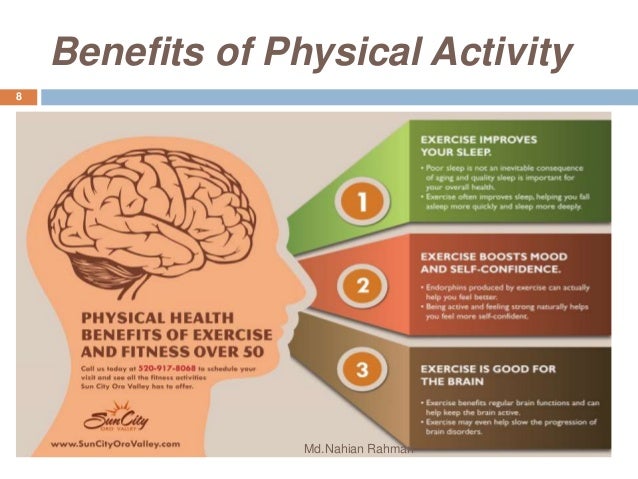

Physical activity interventions differentially affect exercise task and barrier self-efficacy: A meta-analysis. Physical activity and self-esteem: Testing direct and indirect relationships associated with psychological and physical mechanisms. Physical activity and depression: Towards understanding the antidepressant mechanisms of physical activity. Physical activity and common mental disorders.

Number of years of team and individual sport participation during adolescence and depressive symptoms in early adulthood. International Journal of Behavioral Nutrition and Physical Activity.

Mechanisms underpinning the association between physical activity and mental health in adolescence: A 6-year study. Interactive effects of fitness and hormone treatment on brain health in postmenopausal women. Inflammation and its discontents: The role of cytokines in the pathophysiology of major depression. Immunological effects of behavioral activation with exercise in major depression: An exploratory randomized controlled trial. Hippocampus in health and disease: An overview. Įxercise-induced neuroplasticity: A mechanistic model and prospects for promoting plasticity. Best Practice & Research Clinical Rheumatology. Įffects of exercise on physical self-concept, global self-esteem, and depression in women of low socioeconomic status with elevated depressive symptoms. Įffects of different exercise conditions on antioxidant potential and mental assessment. ĭiscovery and replication of cerebral blood flow differences in major depressive disorder. Ĭomparison of changes in physical self-concept, global self-esteem, depression and anxiety following two different psychomotor therapy programs in nonpsychotic psychiatric inpatients. īridging animal and human models of exercise-induced brain plasticity. īrain grey matter abnormalities in medication-free patients with major depressive disorder: A meta-analysis. īody image satisfaction and depression in midlife women: The Study of Women’s Health Across the Nation (SWAN). Īssociations of changes in cardiorespiratory fitness and symptoms of anxiety and depression with brain volumes: The HUNT Study. Īssociations between loneliness and perceived social support and outcomes of mental health problems: A systematic review. Īssociation between physical exercise and mental health in 1.2 million individuals in the USA between 20: A cross-sectional study. Īssessment of bidirectional relationships between physical activity and depression among adults. Īnxiety disorders and inflammation in a large adult cohort.
BENEFITS OF PHYSICAL ACTIVITY FOR MENTAL HEALTH TRIAL
Īn 8-week randomized controlled trial on the effects of brisk walking, and brisk walking with abdominal electrical muscle stimulation on anthropometric, body composition, and self-perception measures in sedentary adult women. Below, we’ll outline some psychological and biological explanations.Īerobic exercise increases hippocampal subfield volumes in younger adults and prevents volume decline in the elderly. Why the link?Īlthough evidence of a relationship between activity and mental health is piling up, scientists are still trying to figure out why this link exists.Īnd they have a few ideas. Perhaps it’s causal for some people but not for others.

So, it’s likely to be a complex relationship that varies from person to person. And everyone’s body responds differently to exercise. In this case, you could argue that depression causes a lack of exercise.Īnd there is growing evidence of a causal relationship between physical exercise and reduced mental health risk.īut everyone experiences mental health conditions in different ways. Similarly, the researchers concluded that all types of physical activity were associated with reduced mental health symptoms, compared with no exercise.īy now, the fact that these two things are related is clear.īut researchers are still trying to figure out whether the relationship is causal: Does exercise directly cause a reduced mental health risk?Īs an example, symptoms of depression may make people less likely to exercise. Another study used data from 1.2 million people.


 0 kommentar(er)
0 kommentar(er)
